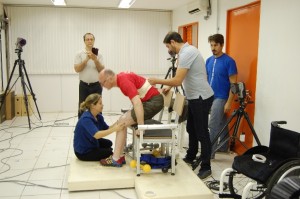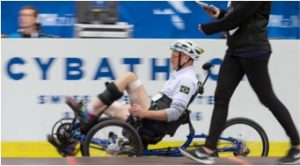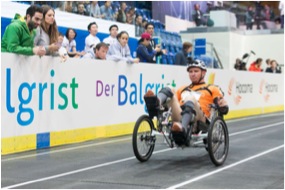During the fourth year (2019) of our CACAO, we have been investigating novel approaches of electrical stimulation with the aim to reduce the induced muscle fatigue. An experimental protocol with 4 participants with Spinal Cord Injury was ran on November.
The third year (2018) of our Associate team was the opportunity to improve our algorithms for FES control in the context of Assisted Cycling. One experimental protocol was ran at UnB to compare different algorithms of leg movements reconstruction. Emerson Fachin-Martind (UnB) and Henrique Resende (UFMG) spent 3 months in Montpellier to define the frame of an extended collaboration. Results should be published in short future.
The second year (2017) of the existence of our associate team was once again very rich. During the first year, a pilot study was achieved on 2 complete paraplegic patients in Brazil. The experimental setup has been modified and optimized during the first part of this second year and 5 patients were finally included. The objective was to investigate the possibility to use FES on lower limb muscles to ensure an extra support during seat to seat transfer in order to diminish arm efforts. Three force plates were used to record efforts on origin and destination seats and under feet . Motion capture system and inertial sensor on trunk was also involved. Data processing is under progress.
After the participation into Cybathlon 2016, we have been mainly working in publications. Several have been submitted.A new Brazilian partner is collaborating with CACAO, Prof Resende team from UFMG university in Belo Horizonte, specialized in instrumentation will participate into the future developments.
The first year (2016) of the existence of our associate team was rich in exchanges and collaborations between our two laboratories.A protocol has been designed and the associated setup developed to adapt the approach initially proposed by CAMIN to pivot transfer study. After ethical agreement obtained some pilot studies on 2 complete paraplegic patients have been carried out. The objective was to investigate the possibility to use FES on lower limb muscles to ensure an extra support during seat to seat transfer in order to diminish arm efforts. Three force plates were used to record efforts on origin and destination seats and under feet (fig 1). Motion capture system and inertial sensor on trunk was also involved and data processing is under progress. From our observations we concluded that some improvements of the setup were needed before performing the inclusions of subjects. The new setup should be ready soon and new experiments performed in short future.We have developed a training protocol for SCI patients to integrate a cycling competition (Cybathlon competition (http://www.cybathlon.ethz.ch) (Guimaraes et al., 2016). 14 volunteers were included in Brazil and 1 in France. From the 14 brazilian subjects, 1 was selected to participate to the competition (fig 2 and 3). During the physical and technical preparation, our two teams were sharing information and experience and several meetings were organized in France and Brazil. The first objective was to have a demonstrator of our “savoir-faire” during the Cybathlon. New strategies in terms of muscle activation patterns and optimization of stimulation control have been explored to reduce energy expenditure (Lucas et al., 2016). This application of FES was new for both our teams and joining our efforts we have been able to make a step forward the possibility for SCI individuals to have access to cycling for both leisure and fitness reasons. A review article should be submitted soon.

Figure 1 – Transfer protocol setup
 Figure 2 – (Left) French and (Right) Brazilian pilots training at Brasilia University.
Figure 2 – (Left) French and (Right) Brazilian pilots training at Brasilia University.


Figure 3 – (Left) French and (Right) Brazilian pilots performing at Cybathlon competition in Kloten (Switzerland)





